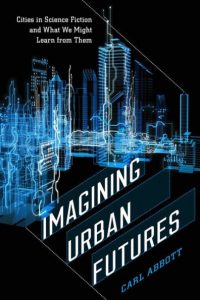
Through chapter 3 of this book, the author takes a guide to different types of mobile cities. Different city-like structures are examined throughout the chapter and explained how it works as a city and what does it mean by being such type of a city. The descriptive images of the city from the books were vivid and compelling, it was very enjoying to read the part.
First part of the chapter introduces a “Hunter City” that can move using different means such as: legs, tracks, water, etc. Because of its mobility and the types of resource (coal, petroleum, steam) they use, the city hunts down or pirates other cities to obtain new resources. With the enormous, breathtaking visual expression with dystopian surroundings, the hunter city highlights the uneven relationship between the city and the surroundings.
The second part introduces a train functioning as a city. The train itself can be used to represent an ignorance of the protagonist of the world he or she lives in, both inside and outside the train. The book gives an example; Inverted World (1974), people were ignorant of the world outside as they were too concerned of making the city (‘Earth’) work by chasing the resource. In other movie, Snowpiercer (2013), the main characters from rear class were ignorant of what was happening in the front class.
The last part offers a concept of “Distributed City”. The distributed city often is portrayed as an optimistic concept. Each different, distant part has a unique function so that as a whole, the parts function like a city. The way that the distinct parts communicate to each other is very interesting, and innovative, like the imagery from Battlestar Galactica (2004-09).
Taeyeon Lee (3035718096)
Good summation of your understanding of the reading. Through the vivid description of mobile cities, to what extent to you understand that mobile cities are allegories of cities today? Beyond the science-fiction genre, what do films that depict moving cities – vividly portrayed by the film Mortal Engines (2018) for example – tell us about the modern world paradigm based on nations, the relationship between cities and their governance?